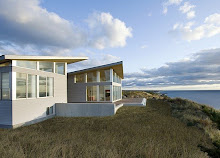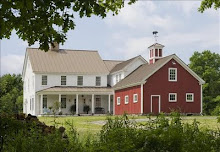"It's free square footage."
"You'll kill your resale value!"
Yes, the detractors have a point.
I admit that building in New England without a basement is, well, let me just say, unusual. But I was determined to avoid the inevitable problems of mold that accompany virtually every basement eventually. Sure, there are French drains, sump pumps, waterproofing sealers, the list goes on... but we are fighting Nature here, and Nature always wins. Then the mold starts. You may not see it at first. It's lurking behind that nicely painted drywall, or under the laminate flooring. Water always finds a way.
THE CONCORD GREEN HOME building site has a wonderful in-town location, but it also happens to have a high water table. Advantage: Walk to Walden Pond! Disadvantage: You might wake up one rainy morning to find your nice leather sofa floating around the basement.
So, the decision was easy. Especially when one is trying to build Healthy, which means acknowledging that, unless you completely seal off the interior of your home from its foundation - with smart utilization of insulation and water/vapor barriers - that moldy basement air will mix with your interior air. Not good. Really not good for those with allergies and asthma, or the many more folks who might easily become sensitized from repeated exposures to mold.
The experts at ZeroEnergy Design recommended a sealed crawl space, which is the best building science available for this type of lot. Strong. Sealed. Completely lined with thick insulation. Absolutely no air or vapor connection with the interior of the house. Nice. If you want some bonus space, meet me in the nice dry attic, with its graceful sheltering roof lines and sun-drenched views.
As Henry David Thoreau, author of On Walden Pond, so eloquently said, ""If you have built castles in the air, your work need not be lost. That is where they should be. Now put the foundations under them." If Henry were still around, he might have added, "... And make sure you seal them up tight!"



































No comments:
Post a Comment